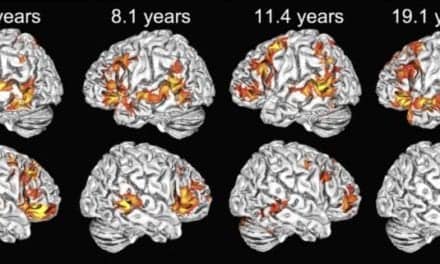Exercise appears to reduce the long-term risk of bronchiectasis, a potentially serious disease of the airways, according to a study published in the journal Radiology.
Bronchiectasis is characterized by repeated cycles of inflammation and exacerbations that damage the airways, leaving them enlarged, scarred and less effective at clearing mucus. This creates an environment ripe for infections. Risk increases with age and the presence of underlying conditions like cystic fibrosis. There is no cure.
CT is used to confirm or rule out the disease in patients with symptoms like shortness of breath and coughing up mucus. Bronchiectasis has also been found on CT in asymptomatic and mildly symptomatic individuals.
Little is known about factors that can reduce the risk of bronchiectasis. While some studies have tied higher levels of cardiorespiratory fitness to a reduced risk of declining lung function and airway diseases, such as chronic obstructive pulmonary disease, its benefits in reducing the risk of bronchiectasis are unknown.
To examine the association between cardiorespiratory fitness and bronchiectasis, researchers analyzed data from the long-running Coronary Artery Disease in Young Adults (CARDIA) study. CARDIA was launched in 1984 across the U.S. to examine the risk factors for coronary artery disease in young adults. The researchers looked at 2,177 healthy adults who were ages 18 to 30 years at the beginning of the study period. The study participants were followed up over a 30-year period with fitness tests and CT.
“We used year zero and year 20 cardiorespiratory fitness measured as exercise duration on a treadmill and ascertained bronchiectasis on chest CT at year 25,” says study lead author Alejandro A. Diaz, MD, MPH, assistant professor of medicine at Harvard Medical School and associate scientist at Division of Pulmonary and Critical Care Medicine at Brigham and Women’s Hospital in Boston. “We assessed whether differences in treadmill duration between year zero and 20 were associated with bronchiectasis on CT at year 25.”
Of the 2,177 participants, 209, or 9.6%, had bronchiectasis at year 25. Preservation of cardiorespiratory fitness reduced the odds of bronchiectasis on CT at year 25. “In an adjusted model, one minute longer treadmill duration between year zero and year 20 was associated with 12% lower odds of bronchiectasis on CT at year 25,” Diaz says. “Having preserved fitness at middle age is associated with lower chances of bronchiectasis.”
The researchers pointed to several possible explanations for the relationship between cardiorespiratory fitness and bronchiectasis. For one, a high level of cardiorespiratory fitness is linked with lower levels of systemic inflammation, which might help preserve the health of the airway. Good cardiorespiratory fitness also reduces the risk of certain diseases associated with bronchiectasis, such as asthma and pneumonia. Finally, high fitness levels may improve the ability of the airway to clear mucus.
The researchers observed a higher prevalence of bronchiectasis than found in previous studies. The difference may be explained by the use of CT for detecting bronchiectasis in the new study rather than the physician-based diagnosis used in previous studies.
“This study suggests that bronchiectasis on CT scans might be more frequent than previously thought,” Diaz says. “However, the clinical implications of finding bronchiectasis on CT scans in people with no or mild symptoms remain to be determined.” The researchers are studying bronchiectasis in other populations like smokers to look for features of the airways and lung tissue associated with bronchiectasis flare-ups.
“These results amplify the benefits of fitness to human health when a sedentary lifestyle is a concerning world epidemic,” Diaz says. “It also highlights that fitness might be a tool to preserve lung health. The airways are challenged by what we breathe in every minute, and fitness may help to preserve lung health from injuries.”






